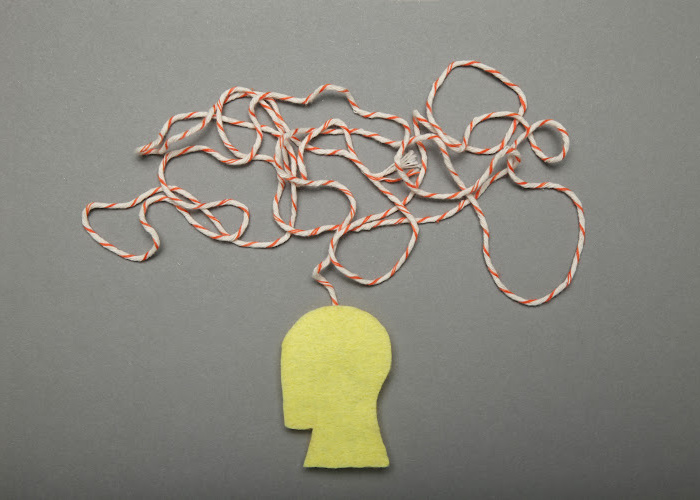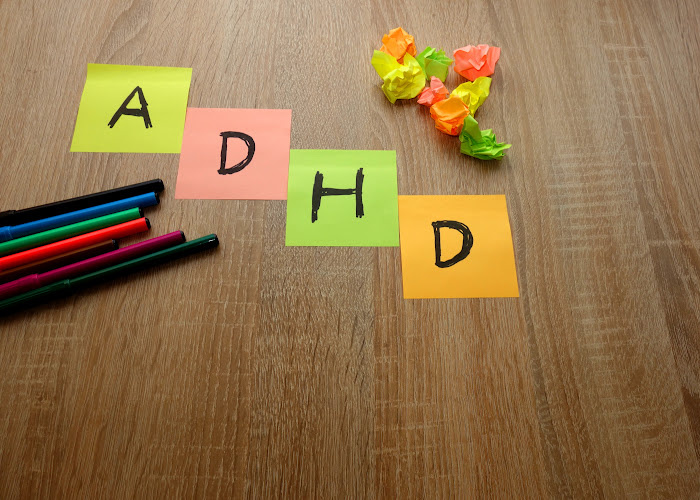It's crucial to know that students with autism and ADHD need special study strategies. Autism…

Difference Between Autism and ADHD: A Clear and Simple Explanation
The journey to understanding neurodevelopmental conditions can often be confusing, especially when parsing the difference between autism and ADHD. It’s common to hear people ask, “Is ADHD autism?” or wonder about the specifics when considering autism spectrum vs ADHD. These questions bear significance because, although both conditions overlap in certain areas, they are fundamentally distinct.
Individuals who are autistic or ADHD face their own unique challenges and strengths. For instance, knowing the precise autism and ADHD differences is vital for tailoring the right support. Parents and caregivers seeking clarity can sometimes face the dilemma of distinguishing autism from ADHD, and this article aims to simplify that complex terrain with straightforward insights that shed light on these two distinct conditions.

Understanding Autism and ADHD as Neurodevelopmental Disorders
Autistic vs ADHD – this ongoing debate highlights the need for a deeper understanding of both Autism Spectrum Disorder (ASD) and Attention Deficit Hyperactivity Disorder (ADHD), each with unique hallmarks yet sometimes overlapping in their attributes as neurodevelopmental disorders. Grasping the intricacies of adhd or autism, and the considerable autism and adhd similarities, aids in accurately identifying and supporting individuals affected by these conditions.
Defining Autism Spectrum Disorder (ASD)
A closer look at autism spectrum disorder unveils a complex framework marked by nuanced differences in social interaction, communication, and behavior. For many with ASD, a pattern emerges where social cues are often misinterpreted and non-verbal communication can be challenging. Repetitive behaviors and deep devotion to certain interests are signals pointing toward a diagnosis of ASD, manifesting uniquely in each individual.
Defining Attention Deficit Hyperactivity Disorder (ADHD)
Conversely, the ADHD or ASD debate shifts when we examine Attention Deficit Hyperactivity Disorder. ADHD is typified by persistent patterns of inattention, impulsivity, and in some cases, hyperactivity. These symptoms dramatically affect a person’s functionality – from struggling to maintain focus to organizing daily tasks and activities. The distinction between autism and adhd stems most clearly from ADHD’s hallmark characteristics.

Early Signs and Characteristics in Children
When considering a child’s development, adhd or autism symptoms may become noticeable through various early signs. For instance, children may experience difficulties in forming friendships, expressing thoughts, or staying engaged in conversation. Parents and educators might observe a propensity toward hyper-focus or, alternatively, rapid shifts in attention, both indicators of potential neurodevelopmental conditions.
Similarities and Shared Traits
While a defined line sets apart autism or ADHD, the conditions share common ground in several areas. Both can exhibit sensory sensitivities and display forms of impulsivity. A child with either condition could face hurdles in the realm of social interactions and emotional regulation. Therefore, drawing parallels in the autism and adhd comparison becomes instrumental for those crafting multi-faceted support and treatment strategies tailored to support the coexistence of autism and ADHD.
The Distinctive Characteristics and Challenges of Autism vs ADHD
When exploring the difference between ADHD and autism, it’s essential to understand how each disorder impacts behavior and development. While both conditions can co-occur, their signs and the challenges they present vary significantly. Accurate autism and ADHD diagnosis is crucial for implementing suitable autism and ADHD treatment strategies, which can result in a marked improvement in quality of life for those affected.
One of the primary areas where autism differs from ADHD is communication. Autistic individuals may have a deep investment in specific subjects, often displaying an extraordinary depth of knowledge about their particular interests. Their challenges with verbal and non-verbal expressions can lead to difficulties in traditional social interactions. Certain behavioral patterns, such as an adherence to routines and a marked distress at their disruption, are also common in autism, outlining a notable autism versus ADHD distinction.
In contrast, individuals with ADHD generally exhibit a varied set of behaviors that center around a lack of attention and heightened impulsivity. Their difficulty maintaining focus often stems from a propensity towards external distractions rather than a lack of interest. Additionally, children with ADHD may struggle with repetitive tasks, becoming easily bored and seeking new stimuli, a contrast to the preference for routine seen in autistic individuals. The ADHD-associated impulsivity also extends to a person’s speech patterns, often leading to rapid-fire conversation and interrupting flow.
Attention Span:
- Autism: May have focused attention on specific interests.
- ADHD: Tends to exhibit inattention due to external distractions.
Communication and Social Interaction:
- Autism: Difficulties in understanding social cues and non-verbal communication.
- ADHD: Impulsivity in conversation, often interrupting or speaking without a filter.
Reaction to Routine and Structure:
- Autism: Relies on routine and structure; change can cause distress.
- ADHD: Prefers variety and can become bored with long-standing routines.
Sensory Processing:
- Autism: May have strong adverse reactions to sensory stimuli.
- ADHD: Exhibits high activity levels, can seek out physical risks.
Distinguishing the nuanced autism vs ADHD symptoms is key to providing the right support, especially in children, where early intervention can have a substantial impact.
Although autism and ADHD in children can present overlapping characteristics, recognizing and understanding their unique challenges empowers caregivers and medical professionals to develop personalized approaches.
This careful delineation offers the best foundation for children to thrive, despite the complexities of their experiences with either or both conditions.

Conclusion
Discerning the difference between ADHD and autism is more than an academic exercise; it is critical in charting a course for effective intervention and support. Each condition, with its unique set of challenges, including distinct autism and ADHD symptoms, shapes the path for diagnosis and the therapeutic strategies that follow. It’s this understanding that acts as a compass for those navigating the complexities of autism vs ADHD, guiding them towards the most beneficial support systems.
Especially in cases of autism and ADHD in children, where development and learning are so dynamic, the stakes are high. Tailored and timely interventions, be they behavioral therapy, educational adjustments, or pharmacological approaches, can make a profound difference in a young person’s life. Identifying the autism and ADHD differences not only clarifies the diagnosis but also equips caregivers with the knowledge to seek out the most appropriate treatments.
For individuals with dual diagnoses, the journey can be intricate, requiring a comprehensive and coordinated care approach to manage the intertwined facets of both ASD and ADHD. The cornerstone of this journey is an early recognition and accurate assessment of the conditions. Ultimately, our goal is to empower those living with these neurodevelopmental disorders to reach their fullest potential, armed with an arsenal of information and resources tailored to address their specific needs.
FAQ
What is the main difference between autism and ADHD?
The main difference lies in the nature of the challenges presented by each condition. Autism is primarily associated with social communication challenges and repetitive behaviors, whereas ADHD is characterized by difficulties with attention, hyperactivity, and impulsivity.
Can you be both autistic and have ADHD?
Yes, it’s possible for an individual to have both autism and ADHD. This is known as dual diagnosis or comorbidity, and it requires a nuanced approach to treatment and support.
What are the early signs of ASD and ADHD in children?
Early signs of ASD can include delays in speech, difficulties with social interactions, and repetitive behaviors. ADHD early signs often include inattention, hyperactivity, and impulsive actions that seem inappropriate for a child’s age.
How do autism and ADHD overlap in symptoms?
Both conditions can include challenges with social skills, sensory processing, and impulse control. However, the context and presentation of these challenges will often differ between ASD and ADHD.
Are the treatments for autism and ADHD different?
Yes, while some strategies may overlap, generally, autism treatment focuses on improving social skills and communication, while ADHD treatment often emphasizes increasing attention, reducing hyperactivity, and managing impulsivity.
How is ADHD diagnosed compared to autism?
Diagnosis for each condition typically involves a thorough evaluation by specialists, but the criteria differ. ADHD diagnosis centers on assessing attention and activity levels, while autism diagnosis focuses on social communication and behavior patterns.
At what age can you typically notice differences between autism and ADHD?
Signs of autism can sometimes be spotted as early as 18 months and diagnosis commonly occurs by age 2. ADHD symptoms might emerge around the age of 3 or 4 but formal diagnosis usually occurs once the child starts facing difficulties at school, around the age of 5 to 7.
Is ADHD part of the autism spectrum?
No, ADHD is not part of the autism spectrum. They are distinct neurodevelopmental disorders, although they can co-occur and have some overlapping symptoms.
Can changes in routine affect children with ADHD the same way as those with autism?
Changes in routine can be challenging for both, but for different reasons. Children with autism often rely on routines and can become very distressed with changes. Those with ADHD might struggle with changes because it requires re-establishing focus and adapting to new rules or expectations.
How do sensory processing issues manifest differently in autism compared to ADHD?
Children with autism may have aversions or heightened sensitivities to certain sensory inputs and may become overwhelmed. Those with ADHD may become hyperactive or inattentive in response to sensory stimuli, often seeking sensory experiences.
Should siblings of children with autism or ADHD be screened for the conditions?
Yes, it’s advisable for siblings to be screened since there is a genetic component to both conditions, meaning siblings have a higher chance of having the same or a related condition.
What role does genetics play in autism vs ADHD?
Genetics plays a significant role in both disorders. Having family members with either condition increases the likelihood of a child being diagnosed with ADHD or autism.
How do learning styles differ between children with autism and those with ADHD?
Children with autism might have a learning style that includes a strong focus on specific interests and difficulties with generalizing skills. Children with ADHD often learn better with active engagement and can struggle with learning that requires prolonged attention or is not interactive.
Is medication a common treatment for both autism and ADHD?
Medication is more commonly prescribed for ADHD, particularly to help manage attention and hyperactivity challenges. For autism, while medication can be used for certain symptoms, the focus often lies more on behavioral interventions and therapies.



This Post Has 0 Comments